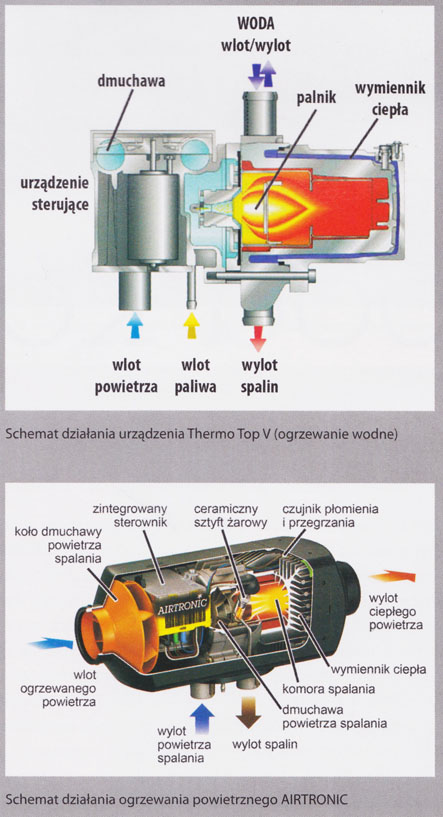 Starting the engine, when it is freezing cold outside, it is associated with a greater consumption of the unit. The solution may be parking heating switched on with a programmer or remote control.
Starting the engine, when it is freezing cold outside, it is associated with a greater consumption of the unit. The solution may be parking heating switched on with a programmer or remote control.
At low temperatures, the engine produces considerable resistance to start – sometimes twice as large as in summer. Thus, the wear of the drive unit during take-off and in the first minutes of its operation increases. Much depends on the engine oil used, but even the best – with low winter viscosity (segment with the letter W in the SAE viscosity marking) – get to the farthest recesses of the pressure lubrication system in long seconds – it happens, that it takes several seconds. Even when fully lubricated, a cold motor continues to operate under unfavorable conditions – the clearance between the piston and cylinder is too great, a rich mixture is needed, fuel consumption increases, and the excess fuel washes the oil from the cylinder walls and seeps into it. In addition, a cold catalytic converter practically does not clean the exhaust gases. So the overall fuel consumption goes up, engine and environmental pollution. What's more, after several attempts to start the unit, the driver recalls the weakened battery.
There is a solution to this – Preheating the engine before starting can reduce these adverse effects of cold, and the amount of energy used for this is relatively small.
There are several types of devices that heat the vehicle when parked. They can obtain thermal energy from the fuel used in the car (and then transfer the heat to the cooling system or via the heated air to the cab), from gaseous fuel (LPG) or use external electrical power. The latter require connection to the network 220 V. Because in Poland it is difficult to imagine public sockets in parking lots, combustion and gas solutions seem to be more universal.
LPG heating is widely used in caravans, tourist and delivery vehicles. Burning gas generates heat, which heats the intake air. It is transported through a blower and a system of pipes that force it into the interior of the car or trailer.
Similar air devices, where the heat source is motor fuel, They are usually installed in vans, bus, vans and trucks. They work without the standard heating system, drawing in cool air from inside or outside the vehicle, heating it and blowing it inside. They can be mounted in the cabin, in the trunk or under the vehicle.
Water devices are dedicated to passenger cars. Electronically controlled (through the microprocessor) they cooperate with the existing heating system in the car and are powered by the fuel system of gasoline and diesel units. There are also versions adapted to biofuel. For an hour, such a heater consumes from 0,25 1 fuel with weaker heating power, do 0,5 1 at high power. Calculated, that at two degrees below zero, the average size of the engine will consume by heating it by 0,31 less gasoline over the distance of the first 6 km.





